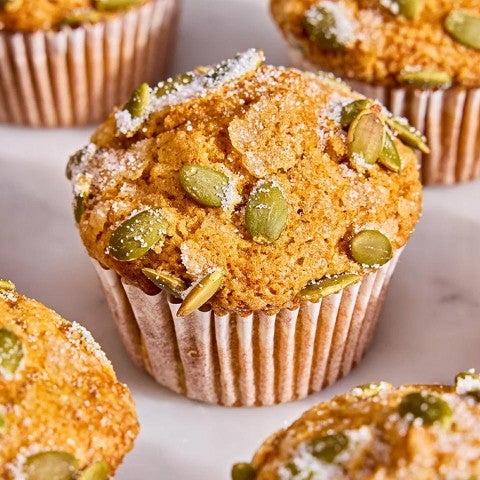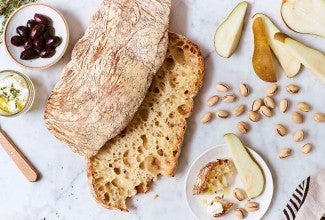-
To make the sponge: Combine all sponge ingredients in a measuring cup. Let it sit for 5 minutes, until bubbles appear.
-
To make the dough: Weigh your flour; or measure it by gently spooning it into a cup, then sweeping off any excess. Put all of the flour and salt into the work bowl of a food processor. Using the plastic (dough) blade, pulse 4 times to lighten and mix.
-
With the machine running, add the yeast mixture, then gradually add the water, pouring the liquid only as fast as the flour can absorb it. Stop the machine as soon as all the liquid has been added.
-
Check the dough by pulsing it 7 or 8 times. It should pull together to form a ball. Watch the processor bowl where the side meets the bottom; if there are still bits of unincorporated flour, the dough is too dry. Pulse in water, 1 tablespoon at a time, until the dough pulls together to form a ball. If the dough clings to the sides of the bowl, it's too wet; gradually add more flour, 1 tablespoon at a time, while pulsing.
-
The formation of the ball marks the beginning of the kneading process. Turn the machine on and let "knead" for 60 seconds with the plastic blade — don't let it knead any longer! If you are using a metal blade, only "knead" 45 seconds and finish kneading by hand for 3 to 4 minutes.
-
Place the dough in an oiled bowl, turning to grease the top of the dough. Cover the bowl with plastic wrap and let rise until puffy, about 1 hour.
-
Divide the dough into 4 pieces. Roll each piece into an oval about 15" x 8". Starting on the long side, roll the dough into a 15" cylinder. Pinch the edges to the body of dough, tapering the ends evenly.
-
Place the dough seam-side down into well-greased a baguette pan or onto parchment-lined or lightly greased baking sheets, leaving about 4" between the loaves. Cover the loaves with a piece of greased plastic wrap, and let rise until puffy, about 45 minutes.
-
While the bread is rising, preheat the oven to 425°F. Place a shallow metal pan on the bottom shelf of the oven.
-
Just before baking, slash the loaves diagonally with a sharp blade, about 1/4" deep. Brush lightly with egg wash.
-
Place the loaves into the oven, and add 1 cup of ice cubes to the pan on the bottom. Close the door quickly to preserve the steam.
-
Bake the bread for 20 minutes, or until its internal temperature reaches 190°F. The loaves should be golden brown all around, smell fragrant, and feel lighter when picked up.
-
Remove the loaves from the oven, and transfer them to a rack to cool.
-
Store the bread at room temperature for 2 days in plastic; or wrap and freeze for up to 3 months.





















